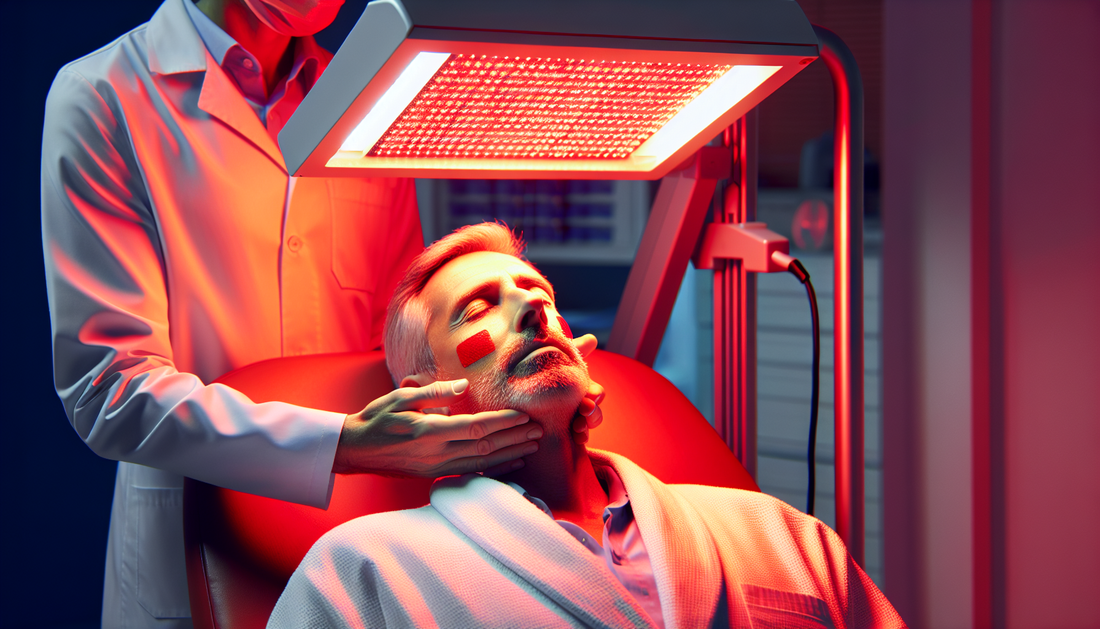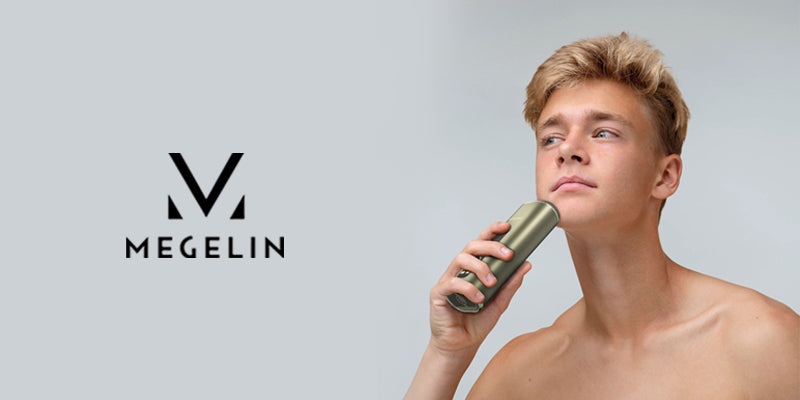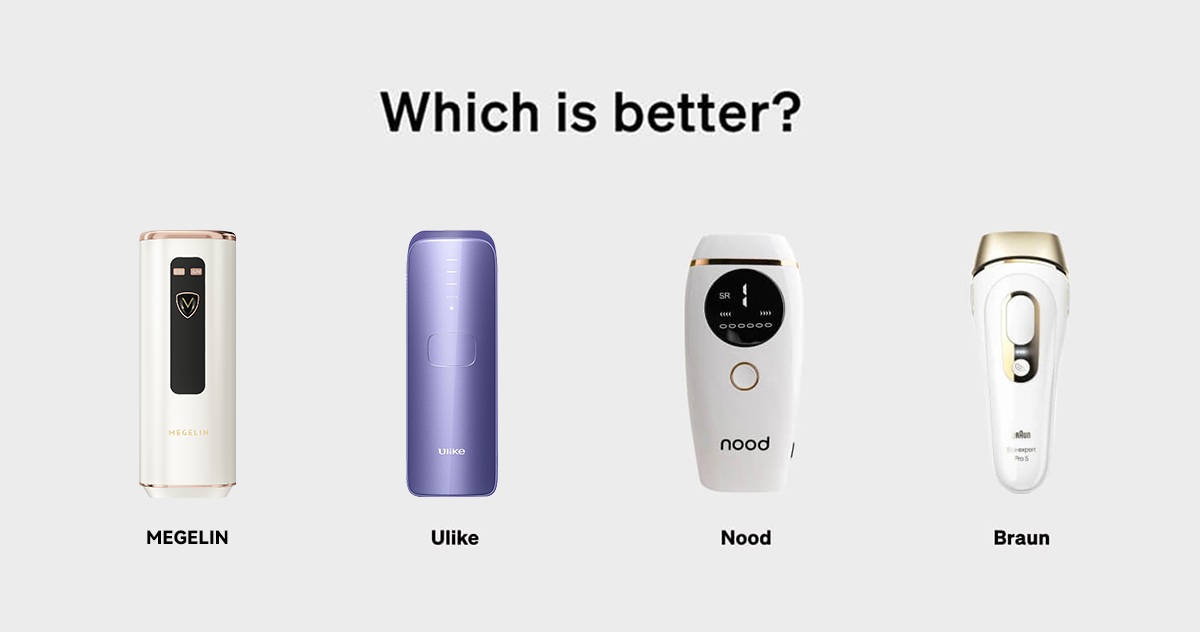
How Effective is Red Light Therapy for Rosacea Relief?
megelinbeautyIn a rapidly evolving era of technology and skin care, red light therapy stands out as a promising treatment for rosacea, a persistent condition marked by inflammation and redness. This non-invasive, scientifically backed method uses specific wavelengths of light to penetrate the skin, aiming to strengthen the skin’s immune system and reduce inflammation without the side effects of traditional treatments. This article explores the effectiveness of red light therapy for rosacea, discussing its principles, application, and comparison with other treatments. It also reviews the triggers of rosacea, the unique mechanism of red light therapy, and insights from dermatologists to help readers make informed decisions about incorporating this therapy into their skin care routine.
What Triggers Rosacea?
Rosacea triggers are diverse and can vary significantly from one individual to another. These triggers are essentially factors that provoke a flare-up of symptoms such as redness, bumps, and pimples. Identifying personal triggers is crucial as it helps in managing and mitigating the condition effectively.
Common Triggers
A wide range of elements can instigate rosacea symptoms, including environmental, dietary, and emotional factors. Commonly reported triggers include exposure to sunlight, stress, hot weather, wind, heavy exercise, alcohol consumption, and certain foods, particularly spicy ones. Skincare products and certain medications can also lead to flare-ups. Each individual may react differently to these triggers, making it essential to understand which specific factors worsen their symptoms [1][2].
Identifying Your Triggers
To effectively manage rosacea, individuals are encouraged to maintain a detailed diary to track their daily activities, diet, emotional states, and the environments they are exposed to. This record-keeping can help pinpoint which triggers are causing flare-ups. Tools like the "Rosacea Diary" provided by the National Rosacea Society can be instrumental in this process. By noting down occurrences and intensities of flare-ups alongside daily activities and conditions, patients can work with dermatologists to devise personalized management plans that significantly reduce the frequency and severity of rosacea symptoms [1][2][3].
Understanding and avoiding personal triggers can not only help in reducing the frequency of flare-ups but also enhance the effectiveness of any medical treatments being used. This proactive approach allows individuals to maintain better control over their rosacea, leading to improved quality of life and skin health.
Overview of Red Light Therapy
Red light therapy (RLT) is a non-invasive treatment that utilizes specific wavelengths of red light to address a variety of skin conditions and promote overall skin health. This therapy leverages low levels of red light to potentially improve the skin's appearance by reducing wrinkles, scars, redness, and acne [4][5][6].
Mechanism of Action
At the core of red light therapy's effectiveness is its ability to enhance mitochondrial function in cells. The mitochondria, often referred to as the powerhouse of the cell, absorb these light wavelengths, which may boost their energy production capabilities. This increased energy allows cells to rejuvenate and repair themselves more effectively, enhancing skin rejuvenation and potentially accelerating the healing of various skin issues [4][5][6].
Potential Benefits
Red light therapy is reported to stimulate collagen production, crucial for maintaining the skin's elasticity and structure. Additionally, it may increase fibroblast production, which is vital for collagen synthesis. Enhanced blood circulation and reduced inflammation are other potential benefits, contributing to healthier skin and alleviation of conditions like rosacea [4][5][6].
Safety and Efficacy
While red light therapy is gaining popularity due to its potential benefits and minimal adverse effects, it is important to note that the treatment is still under extensive research. Most studies suggest that while RLT shows promise for various therapeutic applications, more clinical trials are necessary to fully establish its effectiveness for all claimed benefits [4][5][6]. Notably, RLT does not use ultraviolet (UV) light, which can cause skin damage and increase cancer risk, making it a safer alternative to traditional UV-based therapies [4][5].
Application and Considerations
Red light therapy can be administered through devices equipped with LEDs that emit the appropriate spectrum of light. These treatments are often more effective when performed under medical supervision in clinical settings, although at-home devices are available. It is crucial to use these devices according to the manufacturer's instructions and to wear protective goggles during treatment to prevent potential eye damage [5][6].
By understanding the principles and careful application of red light therapy, individuals seeking non-invasive skin treatments may find it a valuable addition to their skincare regimen. However, consultation with a healthcare provider is recommended to determine the most suitable treatment options based on individual health needs and conditions.
Using Red Light Therapy for Rosacea
Effectiveness
Red light therapy (RLT) has been recognized for its potential to alleviate symptoms of rosacea by targeting the underlying inflammation that characterizes this skin condition. Clinical studies suggest that RLT can significantly reduce the redness and flushing associated with rosacea by enhancing blood circulation and promoting cellular repair. This therapy's ability to boost collagen production also aids in strengthening the skin's barrier, which can be compromised in rosacea sufferers.
Step-by-Step Guide
To effectively use red light therapy for managing rosacea, it is essential to follow a structured approach:
- Consultation with a Dermatologist: Before beginning any new treatment, consulting with a healthcare professional can ensure that red light therapy is appropriate for your specific case of rosacea.
- Choosing the Right Device: Select a red light therapy device that emits light at the correct wavelengths, typically around 660 nm to 850 nm, which are most effective for skin treatments.
- Preparing the Skin: Cleanse the skin thoroughly to remove any makeup, oils, or impurities that could affect the light's penetration.
- Treatment Application: Apply the red light to the affected areas of the face, maintaining the light source a few inches away from the skin. Treatment sessions should last between 10 to 20 minutes and can be repeated several times a week.
- Post-Treatment Care: After using red light therapy, apply a gentle, non-comedogenic moisturizer to help soothe the skin and enhance the treatment's benefits.
By adhering to these steps, individuals can maximize the therapeutic effects of red light therapy for rosacea, potentially leading to a noticeable improvement in skin condition and symptom management.
Comparing Red Light Therapy with Other Treatments
Advantages
- Non-invasive and Gentle
- Deep Penetration
- Reduce Inflammation
- Promote Collagen Production
Red light therapy (RLT) stands out in the treatment of skin conditions like rosacea by providing a non-invasive, gentle approach that is well tolerated by patients [48][49]. The therapy is known for its ability to penetrate the skin at depths of 8-10 millimeters, stimulating the mitochondria to enhance cellular energy and promote healing processes [7]. This results in reduced inflammation and a more even skin tone, which are crucial for managing rosacea symptoms [7]. Additionally, RLT encourages collagen production, improving skin elasticity and texture, making it a favorable option for those with sensitive skin [7].
In comparison to other light therapies, RLT does not involve ultraviolet (UV) light, which can cause skin damage and increases cancer risk, presenting a safer alternative for long-term use [4][5]. The combination of blue and red light therapies has also been shown to be effective, with blue light addressing epidermal conditions and red light reducing sebum production and inflammation, offering a comprehensive treatment strategy for rosacea [8].
Drawbacks
- Need for More Clinical Validation
- Potential Side Effects
Despite the benefits, the effectiveness of red light therapy in treating rosacea still requires more extensive clinical validation. Studies have indicated that while RLT can significantly improve symptoms, the results are varied and more research is needed to establish consistent outcomes [4][6]. Some patients may experience minimal side effects, such as temporary redness or rash, which generally resolve within a few weeks [9].
Comparatively, other treatments like photodynamic therapy (PDT) and laser treatments are often used in conjunction with medications and can target visible blood vessels and thickened skin more aggressively [9]. However, these methods can have more pronounced side effects and may not be suitable for all patients, especially those with sensitive skin or certain medical conditions [9].
In conclusion, while red light therapy offers a promising and safer alternative for managing rosacea, it is part of a broader treatment spectrum where personalization of care is critical. Patients are encouraged to consult with dermatologists to tailor a treatment plan that best suits their specific condition and skin type [9][4].
Conclusion
Through an in-depth analysis of red light therapy (RLT) in the context of treating rosacea, this article has highlighted its promising potential in managing this challenging skin condition. By focusing on how RLT stands as a viable option due to its ability to reduce inflammation and promote cellular repair without the harsh side effects associated with other treatments, the discussion has given individuals suffering from rosacea hope for a more sustainable and less invasive treatment method. Moreover, the emphasis on understanding rosacea triggers reinforces the article's core message: that effective management of rosacea requires a comprehensive approach that includes identifying and avoiding individual triggers, in addition to considering innovative treatments like red light therapy.
The significance of red light therapy in the broader landscape of dermatological treatment options, particularly its advantages over more traditional, invasive approaches, underlines a crucial aspect of patient care—personalization and safety. Encouraging further research and a cautious yet optimistic adoption of RLT, especially for those who have found limited relief in other treatments, sets a forward-looking tone for the field. As we conclude, the article reaffirms the importance of consulting with a dermatologist to tailor a holistic treatment plan that aligns with the patient's unique needs, thus optimizing the chances for improved skin health and quality of life for those battling rosacea.
FAQs
1. Can red light therapy completely eliminate rosacea?
While red light therapy cannot cure rosacea, it is recognized by dermatologists and skincare experts as a valuable tool in managing the condition. Its anti-inflammatory properties are particularly effective in soothing the skin, which helps reduce the redness and irritation commonly associated with rosacea.
2. What color of LED light therapy is most effective for rosacea?
For treating rosacea, Red 633nm and Infrared Yellow 830nm LED light therapies are considered the most effective. Blue light at 415nm, while useful for acne due to its bacteria-killing properties, is not typically used for rosacea.
3. What is the most effective way to treat rosacea?
Laser treatments are highly effective in improving the appearance of enlarged blood vessels and reducing long-term redness associated with rosacea. These treatments are particularly effective on skin that is not tanned, brown, or black, as the laser specifically targets visible veins.
4. Which device is recommended for treating rosacea?
Devices such as intense pulsed light (IPL), pulsed dye laser, and potassium titanyl phosphate (KTP) laser are often recommended for treating rosacea. These light devices offer targeted treatments that can alleviate the symptoms of rosacea effectively.
References
[1] - https://www.rosacea.org/patients/materials/coping-with-rosacea/identifying-rosacea-triggers
[2] - https://www.aad.org/public/diseases/rosacea/triggers/find
[3] - https://www.rosacea.org/patients/rosacea-triggers/factors-that-may-trigger-rosacea-flare-ups
[4] - https://my.clevelandclinic.org/health/articles/22114-red-light-therapy
[5] - https://www.webmd.com/skin-problems-and-treatments/red-light-therapy
[6] - https://www.healthline.com/health/red-light-therapy
[7] - https://drmuller.com/blog/research/red-light-therapy-rosacea/
[8] - https://www.ncbi.nlm.nih.gov/pmc/articles/PMC6988247/
[9] - https://www.aad.org/public/diseases/rosacea/treatment/lasers-lights











